“Prehistory” of Plasma Medicine
Long ago, it was noted that electric discharges in atmosphere result in “unusual smells” influencing living species, and especially human health. These ideas and observations, which are way older than plasma medicine and even concept of plasma itself, can be attributed to year 1785 experiments of Dutch chemist Martinus van Marum with electric discharges above water. German-Swiss chemist Christian Friedrich Schönbein observed generation of the same “unusual pungent smell”, and recognized it as one often following a bolt of lightning. He isolated in 1839 the gaseous chemical responsible for this “smell”, and named it “ozone” (from the Greek word “to smell”). Air plasma applications in biology have been significantly strengthen in 1850s when Werner von Siemens first used DBD plasma to generate ozone for bio-decontamination of water. Industrial scale of such plasma-based bio-decontamination has been achieved half-century later, when the first drinking water plasma plant was built in Nice, France. At that time, interestingly, ozone was considered as an electric discharge-generated healthy component: Beaumont-city in California even had as its official slogan “Beaumont: Zone of Ozone”.

First direct plasma application to treat diseases can be attributed to experimental works of French physicist and physiologist Jacques-Arsène d’Arsonval in early 1900s. The relevant devices had beeen made feasible at that time by Nikola Tesla, who worked with extremely high-frequency currents at high voltage, creating “impressive light phenomena which proved harmless to humans in the case of direct contact with the effusions”. In early 1900s Germany, the devices were further developed for the caloric treatment of patients (diathermy). Rumpf developed a device which differed from the French ones by implementing a capacitively coupled electrode consisting of a Leydener bottle which was directly applied to the patient’s skin. This device can be considered the first DBD plasma source in medicine. Starting from 1920s, thermal electrosurgical devices and then argon plasma coagulator became an important step in medical applications of plasma. Important initial development in this direction is related to works of American scientist and inventor William Bowie in 1920s.
Starting from1960s first patents and pablications started to appear all over the world with a focus on cold plasma sterilization, plasma control of biological activity of microorganisms, as well as plasma regulation of biological properties of medical polymer materials. Number of relevant patents and publications started growing in 1990s, which can be seen from that time materials of the IEEE International Conferences on Plasma Science (ICOPS), the Gaseous Electronics Conference (GEC), the International Conference on Phenomena in Ionized Gases (ICPIG), and the International Symposium on Plasma Chemistry (ISPC). Based on these initial successes, as well as breakthrough development of novel devices able to be directly applied to human body for medical treatment, the new field of PLASMA MEDICINE was born in early 2000s on the nexus of plasma physics and modern medicine.

The second conference ICPM-2 were also organized by Alex Fridman and Gary Friedman from Drexel Plasma Institute and were held in San Antonio, Texas, USA in March of 2009. Number of participants exceeded 110. At the ICPM-2, a new scientific society “The International Society for Plasma Medicine (ISPM)” has been formed to support the activities and interests of the fast growing plasma medicine scientific community. Alex Fridman was elected the Founding President of the Society. The Founding Members of the Board of the International Society for Plasma Medicine were: Jean-Michel Pouvesle (France), Farzaneh Arefi-Khonsari (France), Pietro Favia (Italy), Michael Wertheimer (Canada), Michael Kong (UK), Klaus-Dieter Weltmann (Germany), Gregor Morfill (Germany), Alex Fridman (USA), David Graves (USA), Mounir Laroussi (USA), Geoff Lloyd (UK), Satoshi Hamagouchi (Japan), Alex Dolgopolski (USA), Gary Friedman (USA), Richard Satava (USA).
Group photo of the Founding Members of the Board of the International Society for Plasma Medicine, San Antonio, Texas, USA, 2009
The following two conferences were organized on the European continent – ICPM-3 in 2010 in Greifswald, Germany (number of participants approached 200), and ICPM-4 in 2012 in Orleans, France (number of participants was close to 300). After conferences in America and Europe, the International Society for Plasma Medicine (ISPM) voted for the next conference to be held in Asia: ICPM-5 was then organized in 2014 in Nara, Japan (number of participants 340). ICPM-6 was organized in Bratislava, Slovakia, ICPM-7 was held in Philadelphia, USA, and the upcoming eighth conference (ICPM-8) will be held in Incheon, Korea.

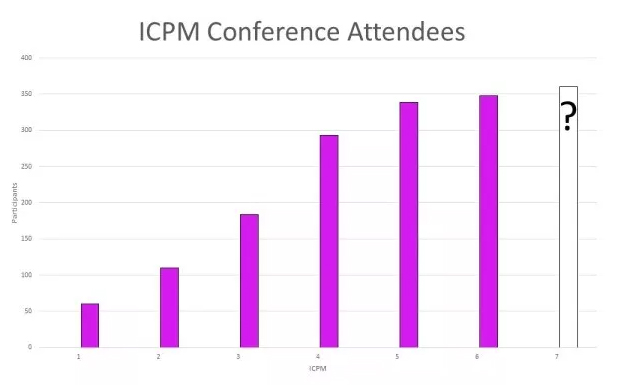
| ICPM |
Place |
Dates |
Organizer |
| 1 |
Corpus Christi, Texas |
October 15-19, 2007 |
A. Fridman and G. Friedman |
| 2 |
San Antonio, Texas |
March 16-20, 2009 |
A. Fridman and G. Friedman |
| 3 |
Greifswald, Germany |
September 19-24, 2010 |
K.-D. Weltmann and M. Juenger |
| 4 |
Orleans, France |
June 17-21, 2012 |
J.-M. Pouvesle and E. Robert |
| 5 |
Nara, Japan |
May 18-23, 2014 |
S. Hamaguchi |
| 6 |
Bratislava, Slovakia |
September 4-9, 2016 |
Z. Machala and K. Hensel |
| 7 |
Philadelphia, USA |
June 17-22 2018 |
A. Fridman |

 First direct plasma application to treat diseases can be attributed to experimental works of French physicist and physiologist Jacques-Arsène d’Arsonval in early 1900s. The relevant devices had beeen made feasible at that time by Nikola Tesla, who worked with extremely high-frequency currents at high voltage, creating “impressive light phenomena which proved harmless to humans in the case of direct contact with the effusions”. In early 1900s Germany, the devices were further developed for the caloric treatment of patients (diathermy). Rumpf developed a device which differed from the French ones by implementing a capacitively coupled electrode consisting of a Leydener bottle which was directly applied to the patient’s skin. This device can be considered the first DBD plasma source in medicine. Starting from 1920s, thermal electrosurgical devices and then argon plasma coagulator became an important step in medical applications of plasma. Important initial development in this direction is related to works of American scientist and inventor William Bowie in 1920s.
First direct plasma application to treat diseases can be attributed to experimental works of French physicist and physiologist Jacques-Arsène d’Arsonval in early 1900s. The relevant devices had beeen made feasible at that time by Nikola Tesla, who worked with extremely high-frequency currents at high voltage, creating “impressive light phenomena which proved harmless to humans in the case of direct contact with the effusions”. In early 1900s Germany, the devices were further developed for the caloric treatment of patients (diathermy). Rumpf developed a device which differed from the French ones by implementing a capacitively coupled electrode consisting of a Leydener bottle which was directly applied to the patient’s skin. This device can be considered the first DBD plasma source in medicine. Starting from 1920s, thermal electrosurgical devices and then argon plasma coagulator became an important step in medical applications of plasma. Important initial development in this direction is related to works of American scientist and inventor William Bowie in 1920s. The second conference ICPM-2 were also organized by Alex Fridman and Gary Friedman from Drexel Plasma Institute and were held in San Antonio, Texas, USA in March of 2009. Number of participants exceeded 110. At the ICPM-2, a new scientific society “The International Society for Plasma Medicine (ISPM)” has been formed to support the activities and interests of the fast growing plasma medicine scientific community. Alex Fridman was elected the Founding President of the Society. The Founding Members of the Board of the International Society for Plasma Medicine were: Jean-Michel Pouvesle (France), Farzaneh Arefi-Khonsari (France), Pietro Favia (Italy), Michael Wertheimer (Canada), Michael Kong (UK), Klaus-Dieter Weltmann (Germany), Gregor Morfill (Germany), Alex Fridman (USA), David Graves (USA), Mounir Laroussi (USA), Geoff Lloyd (UK), Satoshi Hamagouchi (Japan), Alex Dolgopolski (USA), Gary Friedman (USA), Richard Satava (USA).Group photo of the Founding Members of the Board of the International Society for Plasma Medicine, San Antonio, Texas, USA, 2009 The following two conferences were organized on the European continent – ICPM-3 in 2010 in Greifswald, Germany (number of participants approached 200), and ICPM-4 in 2012 in Orleans, France (number of participants was close to 300). After conferences in America and Europe, the International Society for Plasma Medicine (ISPM) voted for the next conference to be held in Asia: ICPM-5 was then organized in 2014 in Nara, Japan (number of participants 340). ICPM-6 was organized in Bratislava, Slovakia, ICPM-7 was held in Philadelphia, USA, and the upcoming eighth conference (ICPM-8) will be held in Incheon, Korea.
The second conference ICPM-2 were also organized by Alex Fridman and Gary Friedman from Drexel Plasma Institute and were held in San Antonio, Texas, USA in March of 2009. Number of participants exceeded 110. At the ICPM-2, a new scientific society “The International Society for Plasma Medicine (ISPM)” has been formed to support the activities and interests of the fast growing plasma medicine scientific community. Alex Fridman was elected the Founding President of the Society. The Founding Members of the Board of the International Society for Plasma Medicine were: Jean-Michel Pouvesle (France), Farzaneh Arefi-Khonsari (France), Pietro Favia (Italy), Michael Wertheimer (Canada), Michael Kong (UK), Klaus-Dieter Weltmann (Germany), Gregor Morfill (Germany), Alex Fridman (USA), David Graves (USA), Mounir Laroussi (USA), Geoff Lloyd (UK), Satoshi Hamagouchi (Japan), Alex Dolgopolski (USA), Gary Friedman (USA), Richard Satava (USA).Group photo of the Founding Members of the Board of the International Society for Plasma Medicine, San Antonio, Texas, USA, 2009 The following two conferences were organized on the European continent – ICPM-3 in 2010 in Greifswald, Germany (number of participants approached 200), and ICPM-4 in 2012 in Orleans, France (number of participants was close to 300). After conferences in America and Europe, the International Society for Plasma Medicine (ISPM) voted for the next conference to be held in Asia: ICPM-5 was then organized in 2014 in Nara, Japan (number of participants 340). ICPM-6 was organized in Bratislava, Slovakia, ICPM-7 was held in Philadelphia, USA, and the upcoming eighth conference (ICPM-8) will be held in Incheon, Korea.

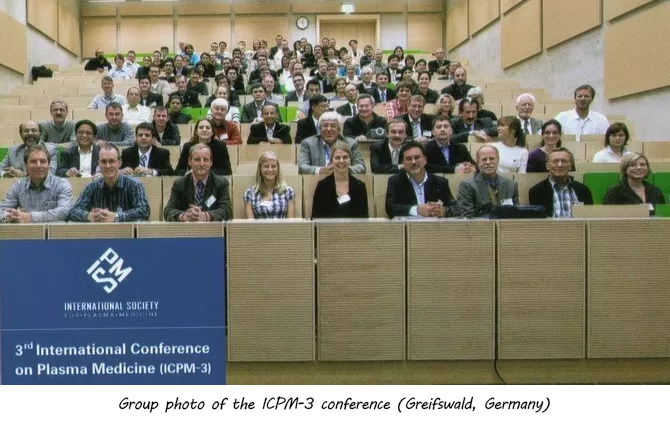
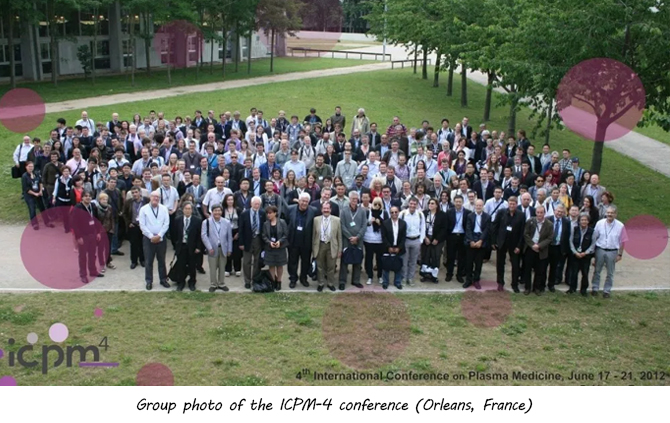
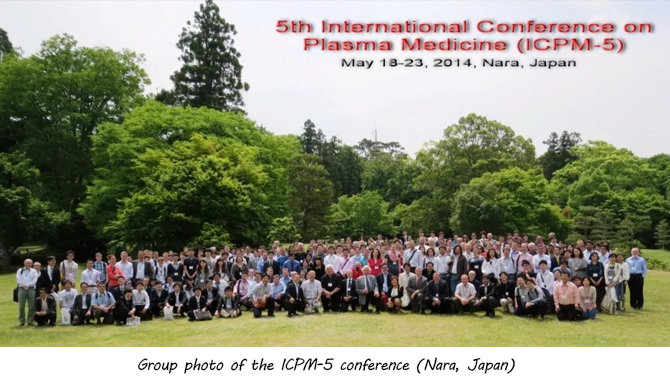
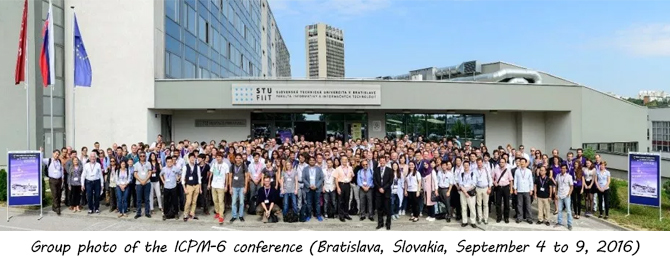

 Welcome Message
Welcome Message